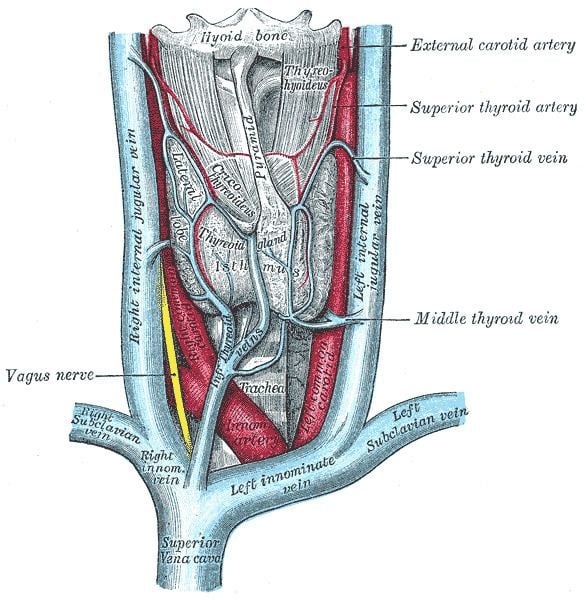Drains to Superior vena cava MeSH A07.231.908.130 | Dorlands/Elsevier v_04/12847276 | |
 | ||
Source Internal jugularsubclaviansuperior intercostalvertebralinferior thyroid Latin vena brachiocephalicavena anonyma | ||
The left and right brachiocephalic veins (or innominate veins) in the upper chest are formed by the union of each corresponding internal jugular vein and subclavian vein. This is at the level of the sternoclavicular joint. The left brachiocephalic vein is usually longer than the right.
Contents
These great vessels merge to form the superior vena cava posterior to the junction of the first costal cartilage with the manubrium sternum.
The brachiocephalic veins are the major veins returning blood to the superior vena cava.
Tributaries
The brachiocephalic vein is formed by the confluence of the subclavian and internal jugular veins. In addition it receives drainage from:
Embryological Origin
The left brachiocephalic vein forms from the anastomosis formed between the left and right anterior cardinal veins when the caudal portion of the left anterior cardinal vein degenerates.
